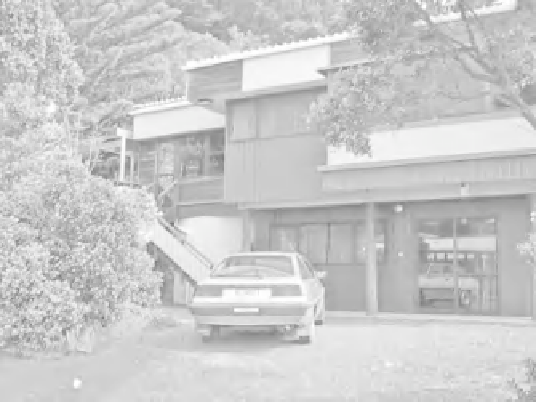Environmental Engineering Reference
In-Depth Information
Figure 8-9
New Zealand rooftop rainfall capture-reuse system.
10. Protect semitransparent storage elements from direct sunlight by positioning
and landscaping. Limit light into devices to minimize algae growth.
11. Any storage unit overflow should be well removed from building founda-
tions.
12. Cisterns should be watertight (joints sealed with nontoxic waterproof mate-
rial) with a smooth interior surface.
13. Covers and lids should have a tight fit to keep out surface water, animals,
dust, and light.
14. Positive outlet for overflow should be provided a few inches from the top of
the cistern and should be sized to safely discharge the appropriate design storms
when the cistern is full.
15. Observation risers should be at least 6 inches above grade for buried cis-
terns.
16. Reuse may require pressurization. Water stored has a pressure of 0.43 psi
per foot of water elevation. A 10-foot tank would have a head of 0
.
43
×
10
=
4
.
3
psi. Most irrigation systems require at least 15 psi, and building distribution
systems operate in the range 30 to 50 psi. To add pressure, a pump and pressure
tank can be used.
17. For potable use systems, disinfection in the form of ultraviolet radiation
units, usually designed as linear flow-through tubes, is usually most practical and
most efficient. These elements add to the cost of a system but protect users from
any potential health threat or contamination.
18. Simple rain barrels require a release mechanism that allows them to empty
between storm events. Connect a soaker hose to slowly release stored water to a
landscaped area.












Search WWH ::

Custom Search